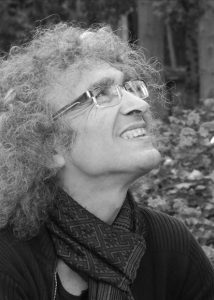Is existence nothing more than the repetition of patterns and fundamental orders? This is the question that patterns pose, like a mirror reflecting reality. Patterns are not merely recurring motifs in the environment; they are ontological structures that allow us to search for order and meaning in the hidden layers of reality. From cosmic orders to human behavioral patterns, patterns display the invisible traces of this ontological question in human-made environments.
The problem of patterns and the questions they raise have been a subject of philosophical inquiry throughout history. Do patterns exist independently, or are they constructs of the mind? Is the world a collection of eternal patterns? Can all phenomena of existence be reduced to a set of fundamental patterns?
The Ontology of Repetition in Contemporary Philosophy
Repetition is one of the most enigmatic features of the world. On the one hand, recurring patterns make it possible to understand phenomena, bring order, and enable the continuity of events. On the other hand, these very patterns can turn into closed cycles that make transformation difficult. This raises a fundamental question: Is repetition merely a mechanism for preserving the status quo, or does it also contain within itself the possibility of change? Can we imagine a world in which, at no level, any kind of recurring pattern exists?
Talk with Farhad Fozouni
Farhad Fozouni, born in 1978 in Tehran, holds a Bachelor’s degree in Graphic Design from the Islamic Azad University and is a member of the Graphic Designers Association. He has won multiple awards in the fields of graphic design and theater, and has served as a juror for festivals and biennials, including the Silver Sarv and Fajr Theater Poster Festival. He has held the position of artistic director for magazines such as Farhang va Ahang, Honar-e-Farda, Kheradnameh, and Tasvirnameh. He also works as a department head or instructor at art high schools including Honarha-ye Ziba, Madrese-ye Vizhe, and Camp Graphic. He has organized several solo exhibitions featuring installation art, sculpture, and painting in Tehran, Germany, Turkey, and elsewhere. He participated as a guest juror in the public call section of the second Patternitecture event, during which we had the opportunity to speak with him.
Talk with Jean Marc Castera

Jean-Marc Castra is a talented artist with a background in mathematics and a recognized expert in Islamic geometric art. After earning his degree in mathematics, he launched an experimental course at Paris-8 University to explore the relationship between mathematics and art and began working on geometric arabesques. At that time, there were limited resources available in this field. He worked for years, publishing his results in two books: “Arabesque – Decorative Arts in Morocco” (1999), along with numerous articles on the subject. Since 2006, he has worked on multiple architectural projects—an extraordinary opportunity to experiment and apply evolving ideas in this artistic field. His works can be seen in places such as the Grand Bazaar and the Masdar Institute of Science and Technology in Abu Dhabi.
